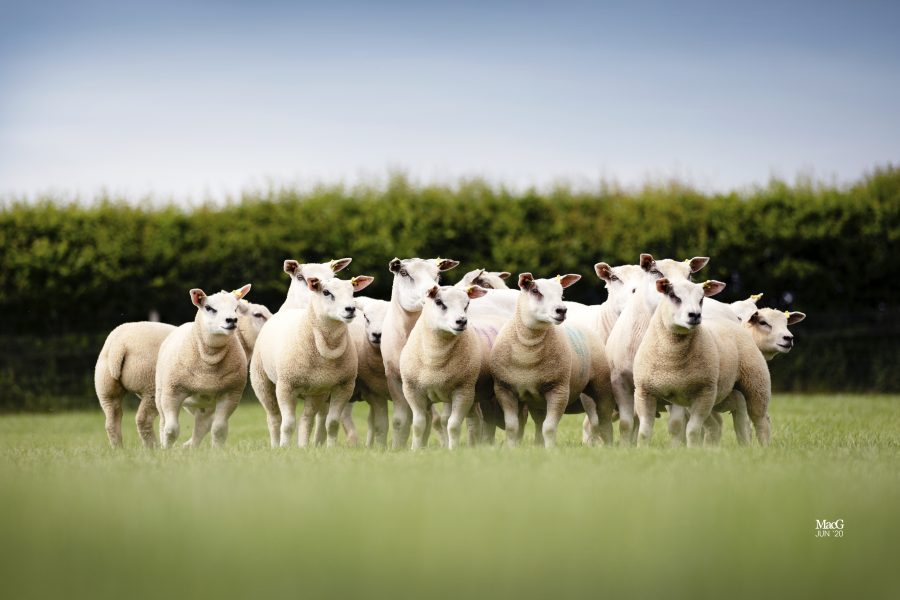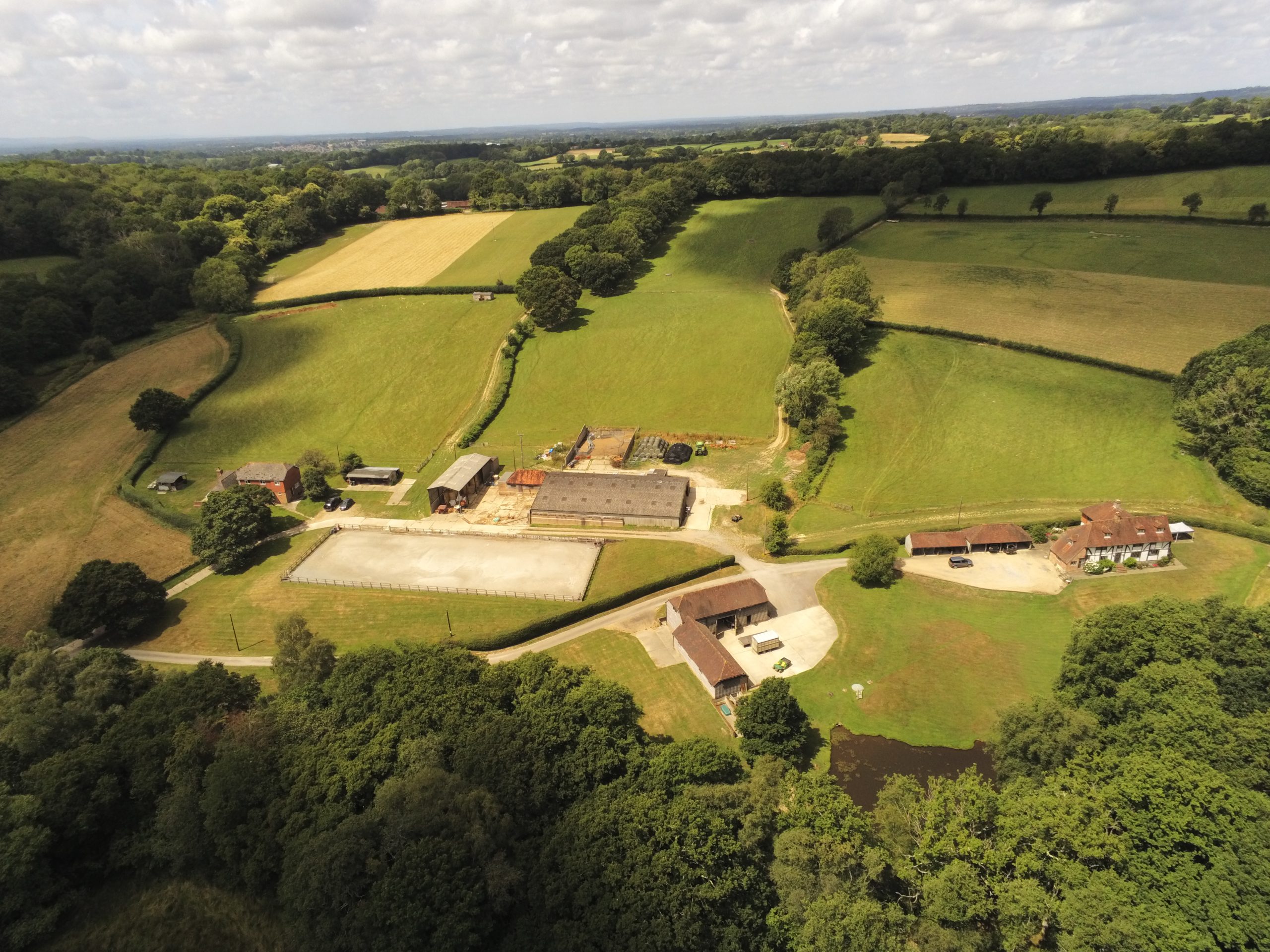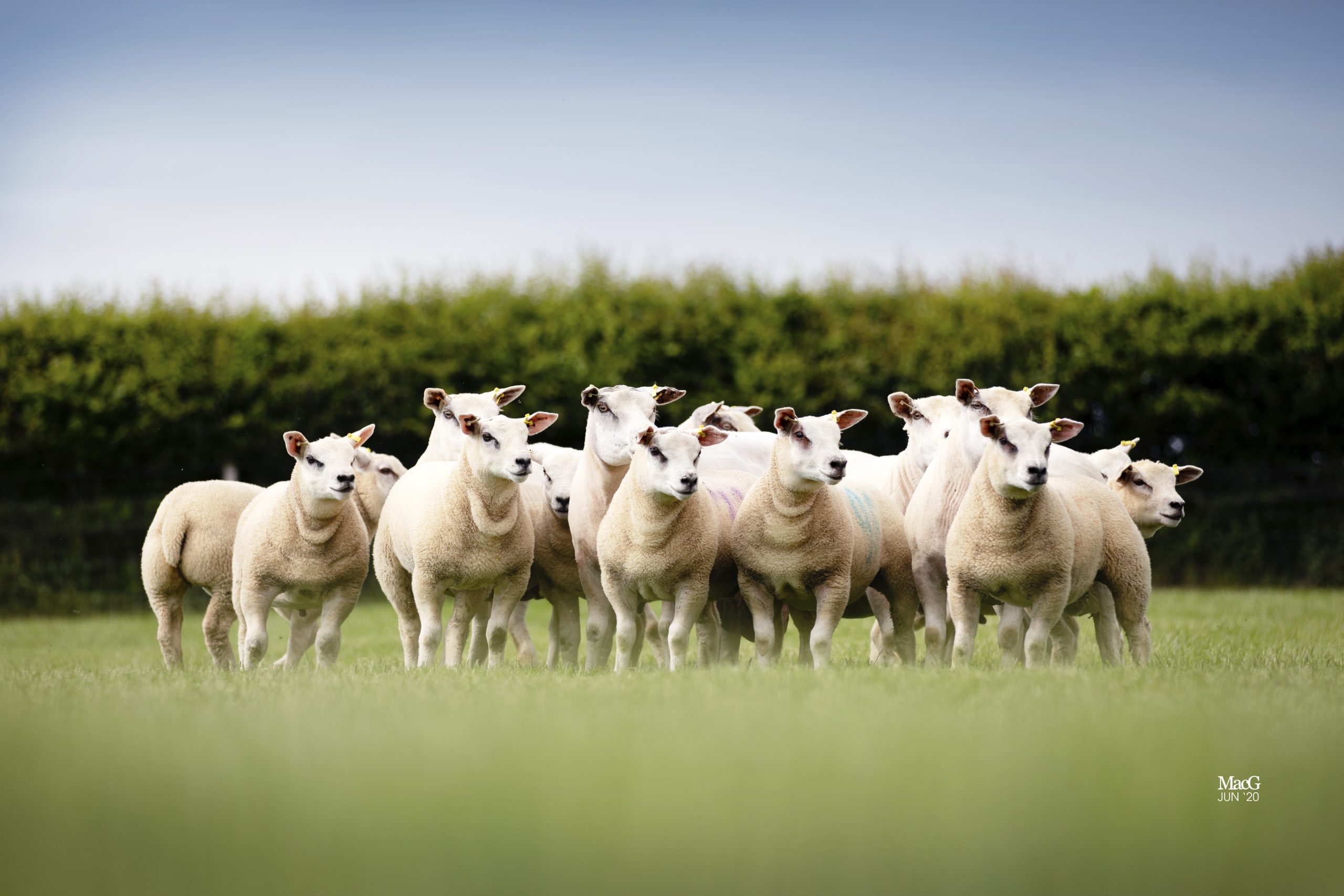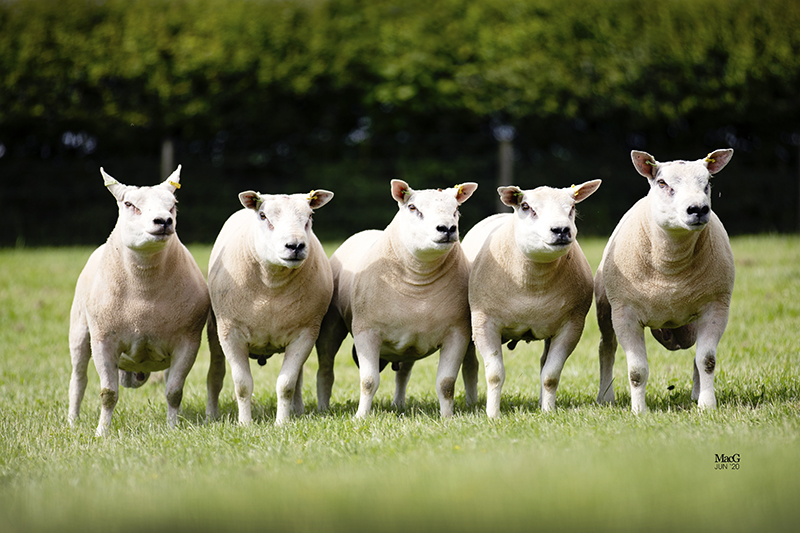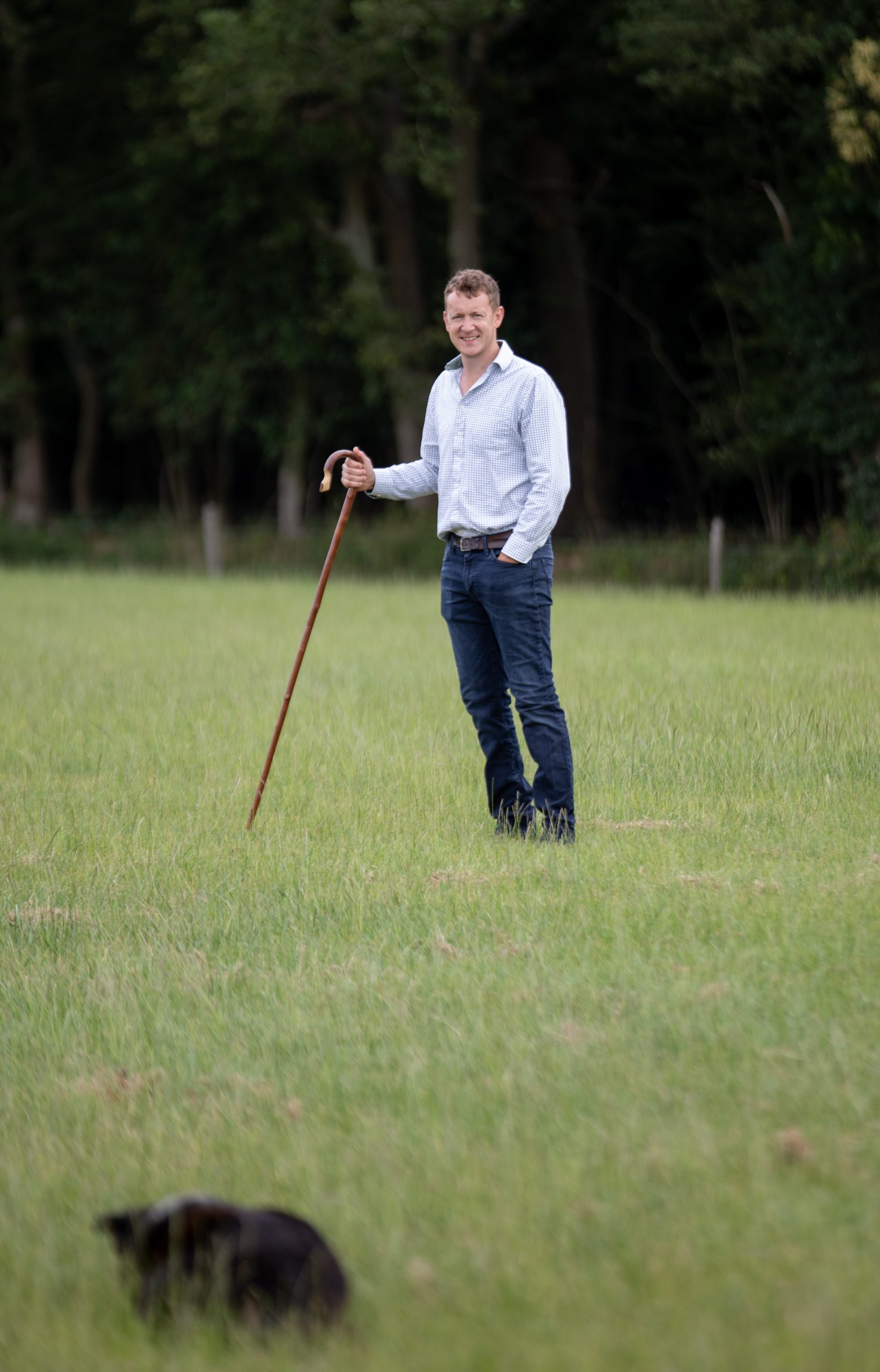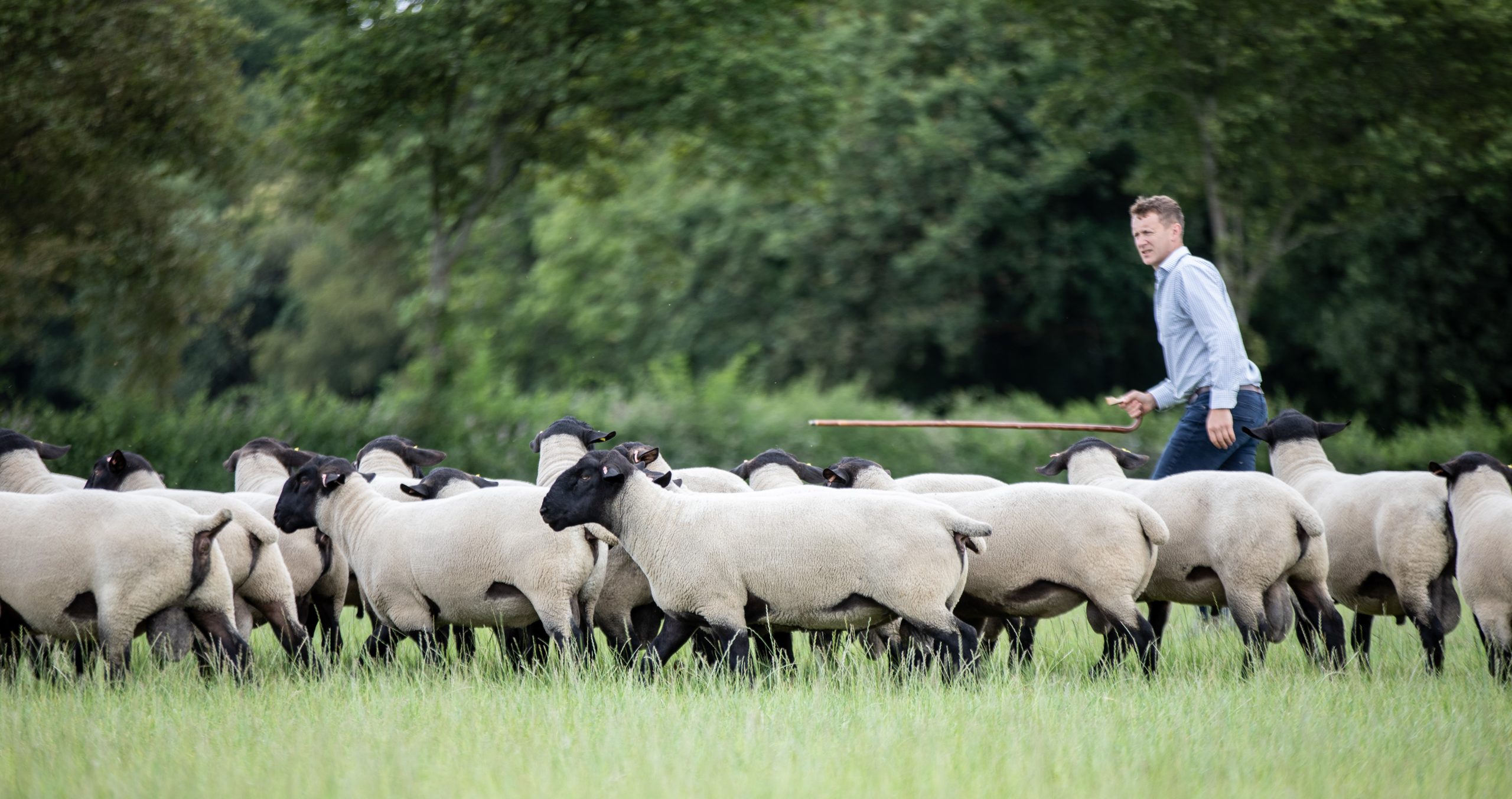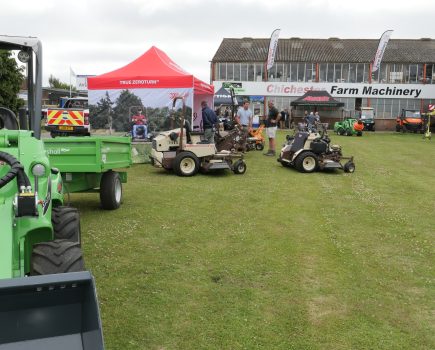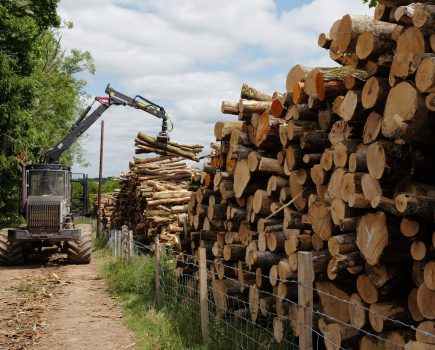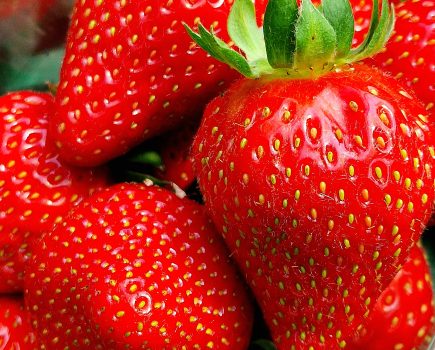This month Nigel Akehurst visits Hole Farm in Hadlow Down to meet young Suffolk ram breeder James Hamilton and find out more about his first on-farm ram sale at the end of August.
Arriving at Hole Farm, I notice the smart promotional signs either side of the farm entrance advertising the upcoming ram sale. As I park up in front of the traditional Wealden farm house James Hamilton comes out to greet me and invites me in for a coffee.
“I’ve always been really keen on farming – my granny was a farmer up in Scotland and that’s where my passion came from,” explained James.
The Suffolk flock was established in 2012 following an opportunity to buy some good foundation ewes from a flock in Scotland that was scaling back. His granny had bred Suffolks and he had always been keen on the breed. He started quite small and has gradually built up to 100 ewes on the farm: 50 Suffolks and 50 commercials.
“What we do is sell Suffolk rams – that is our main business. We’re not trying to breed show ponies; if you go to any of the major shows the Suffolks will have legs the size of tree trunks and heads like a bullock,” he said.
“We are breeding a sheep for the commercial market, for the commercial producer to breed fat lambs or replacement females. They are finer boned, and when they are born they get up and suck. We’ve always selected them for lambing ease, birth vigour and speed to suckle. Anything that doesn’t make the grade goes. It doesn’t matter how good it turns out to be in later life; it goes fat.
“Ultimately, if you’re selling rams to people and the lambs don’t get up and suck – they’re no use,” he explained.
James has sold his Suffolk rams privately to local farms for a number of years now and has built up some good customers.
Tom and Rhiannon Masters, at Chyngton Farm in Seaford, buy James’s rams and he also helps lamb their 700 ewes every February.
They have been really pleased with the lambs and the daughters they’ve kept, he said. The Suffolk-sired lambs get up and suck quickly and the wether lambs grow and finish well off grass. The retained Suffolk mule ewe lambs make maternal and milky ewes.
Recently there was an opportunity to increase the size of his Suffolk flock after the Sandyknowe flock, run by Malcolm Stewart, was dispersed following Malcolm’s retirement from shepherding.
This flock had been managed on a commercial system with the ewes lambing outdoors in the Scottish Borders. He had about 240 ewes at his dispersal sale and James bought 20. The auctioneer, Scott Lambie, suggested he run his own on-farm ram sale down in Sussex given that he had been buying Malcolm’s best rams for a number of years.
Before retiring, Malcolm Stewart had run an annual on-farm ram sale since 2014 which had gone from strength to strength. The cost of intensively feeding rams to achieve the size expected by buyers at the traditional sales triggered the switch to an annual on-farm sale. James has never intensively fed rams for sale, commenting: “Overfeeding rams is no good for the buyer and no good for the ram itself”.
On farm ram sale at Hole Farm on Saturday 26 August, featuring Logie Durno rams
Convinced by the auctioneer to give it a go, James has set a date for his first on-farm ram sale on Saturday 26 August. The sale will be run by South East Marts, with Scott Lambie as the guest auctioneer.
In addition to selling 25 of his own Suffolk rams, he will also have 25 Durno hybrid rams available. The Durno is a hybrid terminal sire based on Texel and Charollais genetics and has been stabilised for over 20 years, ensuring that Durno-sired lambs are consistent.
The Charollais element contributes fast growth rates and easy fleshing, while the Texel adds carcass confirmation and hardiness. These rams are bred exclusively by W&C Ingram at Logie Durno Sheep, a family run business in the north of Scotland. Logie Durno specialises in the production of shearling rams for the pedigree and commercial producer, selling over 1,000 rams annually from nine different breeds.
Logie Durno has put forward 25 Durno rams into the sale, choosing the breed because it is their most popular terminal sire, crossing well over a number of different types of ewe, and is already sold to many flocks in the South East of England. Durno-sired lambs from these flocks are regularly among the top prices at market.
Tom and Riannon Masters, who regularly top the early new season lamb trade at Ashford, have used Durno rams for four years. Since they switched to Durno rams exclusively for their Suffolk mule flock, the auctioneers have commented that Tom and Riannon have produced their best and most consistent lambs.
James felt having 50 rams and two different breeds was key to making the sale more attractive and giving it more critical mass. Viewings will be from 3pm in the afternoon, with the sale starting at 5.30pm. There will also be a bar and some food on offer, too. People can also look at the rams before the sale by getting in touch with James.
“The sheep won’t be trimmed. They were clipped in early June so what you see is what you get – they’ll be presented naturally,” he said.
Performance recording and sustainable farming go hand in hand
The flock has been performance recorded with Signet since the start. When purchasing a stock ram, James is looking for length, a good loin with width all the way along the top line and a set of Estimated Breeding Values (EBVs) to match.
“We do place an emphasis on good performance figures. However, for a lamb to be kept as a replacement or make it as a potential sale ram, they have to look the part too. Breeding purely for figures doesn’t work. Every lamb is handled and assessed as a fat lamb, which is an important part of the selection process.”
The individual traits James focuses on are growth rates, measured as a scan weight EBV, as well as muscle depth and fat depth EBVs. He has always selected for positive fat depth EBVs as this helps lambs achieve sufficient finish from grass diets. Breeding females also retain condition more easily when faced with challenging conditions.
James said about half the rams will have an Index in the top 1% of the Suffolk breed, with the other half being in the top 5%. He commented: “The growth rates we are getting from the purebred and crossbred Suffolk lambs are phenomenal, but it’s important to breed lambs that carry sufficient flesh and finish at slaughter weights; a big lean lamb is heavily penalised in the live market, particularly when trade is back.”
The sale rams are wintered on a mixture of grass and forage crops. This year the rams were turned onto a herbal ley in the spring, established as part of the farm’s Sustainable Farming Incentive scheme.
To keep them growing well and thriving, James moves them every three to four days on a rotation to ensure that they graze efficiently and to allow the grass and clovers time to recover for the next grazing. His essential bits of kit include his sheep dog Hub, quad bike and electric fence Rappa winder.
The Suffolk ewes lamb in April indoors. The commercial twins are lambed outdoors, with the singles and triplets lambed indoors for ease of wet fostering.
Despite the challenging weather this spring, he was pleased with how lambing went this year. The Suffolk ewes turned out at 180% and the commercial ewes turned out at 170%. “That’s marked up and alive at two days old,” he added.
“The Suffolks we have are functional ewes and very good mothers with plenty of milk; both traits that we continually select for. Most of the ewes will lamb themselves. it’s not like you’re getting big lambs that are getting hung or ewes that are wandering off.”
During lambing James records everything with pen and paper and then transfers the data to a spreadsheet on his laptop. He admitted his system is probably inefficient compared to some apps, but finds it works well for his flock of 100 ewes.
Performance recording is important, but the sheep must look the part too
James runs his lambs in two mobs on a grass rotation and weighs them regularly, also taking faecal egg counts monthly (from May onwards) to monitor worm burdens and the need for drenching. The bottom end of the lambs are sold fat, with any ewes that consistently breed below average lambs also culled from the flock.
“It takes about an hour and half to weigh the lambs in each mob, and then it takes five minutes to put the data onto a spreadsheet. This works well for us, but would be too time consuming for larger flocks,” he said.
The Suffolks are weighed at eight weeks, allowing James to identify the most milky ewes, allowing for the differences between singles and twins, as well as shearling ewes which don’t milk as well as the older ewes. The lambs are weighed again before weaning.
In August the lambs are weighed again when they are around typical slaughter weights to help determine a scan weight EBV. A key element of performance recording is the collection of accurate measurements using an ultrasound scanner, which is carried out by a technician from Signet Breeding Services. This data is used to generate muscle depth and fat depth EBVs for each individual animal, taking into account the sex, whether lambs are reared as singles or twins and whether they are out of older ewes or shearling ewes.
In the autumn, ewe lambs for flock replacements and potential sale rams are selected. All lambs must look the part and handle well to be selected, regardless of how good their figures might be. Numbers are further whittled down over the next 12 months to ensure that only the best females are retained and the most suitable rams offered for sale.
I asked if he plans to scale up his sheep enterprise. He replied that it would need to stack up financially.
“I feel very lucky to do what I do and run 100 ewes here on a fairly straightforward system, generating a sensible income for the time involved, which allows me to work off farm. I love what I do, but you would need to have 1,000 ewes and a bigger land base to make it stack up as a standalone source of income,” he said.
James works for Duncan Ellis, who runs a large mixed farming business at Church Farm, and for Richard Brown’s research business, which looks at meat production and dairy production globally.
Market outlook for lamb prices this year
I asked James what he thinks about the current market for lamb. He replied he thought prices were still reasonable (at the time of writing in June), but said it had been a bit depressing from November through to February because of a glut of lambs.
“It wasn’t helped by the drought last summer, resulting in a lot of lambs being carried through into the winter when they were finished on forage crops or winter grazing. Then things really turned around in March, helped by some of the religious festival demand,” he said.
In the medium to long term, he is quite optimistic as he thinks the national flock is likely to contract. “Those that stay in will see some reward, I hope, with the usual seasonal peaks and troughs.”
He also thinks the industry is continually looking to improve. For example, farmers in his flock club are all now aiming to use good genetics and develop their grassland management.
“They are always analysing; not just their scanning percentages but also their mortality and rearing percentages, lamb growth rates, when they have marketed their lambs and how many they have sold by a certain date,” he said.
The only slightly worrying thing is the Australian and New Zealand trade deals for sheepmeat, he cautioned. Most industry analysts think Asia will continue to import most of Australia’s and New Zealand’s lamb exports but, as demonstrated last year by the lockdowns experienced in China which dropped demand for lamb, it only takes a few extra shipments into the UK to really distort the market over here.
Overall, though, James thinks the Government’s push on the environment will create less supply and less supply is good for farmgate prices; so, he’s positive for the future.
Environmental schemes, herbal leys and regenerative agriculture
James is coming to the end of a five-year Countryside Stewardship mid-tier agreement on the farm which has worked well. He plans to renew his agreement and has managed to do quite a few capital projects, including renewing stock fences and laying hedges, work which was carried out in house.
I ask James what he thinks about the term ‘regenerative agriculture’.
“I think it’s a very broad church. There’s a real scale between what some people would call regenerative, which is quite extreme and almost exclusionary to other people. We could argue we are regenerative; we grow a break crop of forage rape which winters our sheep, improves the ground, and is then put back into a new ley which is more productive. So we’re regenerating our pastures and improving our efficiency” he replied.
He thinks there is a danger that the term could be divisive and says we want to be united and stand together in agriculture.
“It’s based on lots of good principles, but ultimately even if farm businesses want to be environmentally sustainable or regenerative, they can’t be either of those things unless they are financially sustainable,” he added.
Farm tour
Finishing up our chat we head out to the fields to see his group of 25 Suffolk rams. Moving them twice a week is clearly paying dividends – they all look in great shape.
James points out the previous paddocks, which are already showing good signs of regrowth. It’s a great advertisement for herbal leys and rotational grazing. We head back to the yard, and before I leave James introduces me to his dog (Hub) and new addition (Jack, Hub’s son) a five month-old puppy who is coming along nicely, he said.
It’s been an interesting morning finding out about James’s Suffolk flock and Logie Durno and the plans for the ram sale. It will be a great opportunity to purchase some quality rams with performance figures to match. I look forward to seeing you at the sale.
Farm facts
- 127 acres in total, including 45 acres of woodland.
- 100 ewes, 50 Registered Suffolk ewes that are performance recorded and 50 commercial ewes.
- MV Accredited. No CODD or CLA in the flock.
- April lambing; Suffolks lambed indoors and commercial twins lambed outside.
- Suffolk rams sold to local farmers to breed their own replacements and produce finished lambs.
- Commercial lambs sold fat via Hailsham Market or private kills.
- Countryside Stewardship mid-tier scheme – options are herbal leys, winter bird food, nectar flower mixes, low input permanent pasture and hedgerow management.
- Capital options made full use of, with 2.5km of fencing and 600m of hedge laying all carried out in house.
- Works off-farm five days a week, two for Duncan Ellis at Church Farm in Litlington, and also works for Richard Brown’s research business.
- James also lambs for Tom and Rhiannon Masters in Seaford during February.
-
- Anafi 1.8.2
- James Hamilton with Hub ©Lucy Carnaghan
- ©Lucy Carnaghan
- Rotational grazing ©Lucy Carnaghan
- Jack ©Lucy Carnaghan

